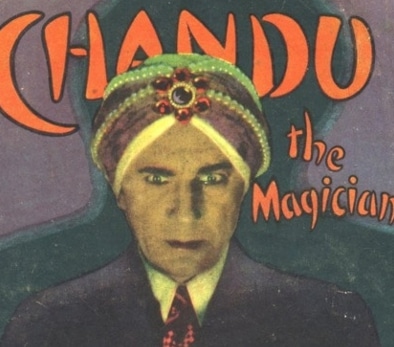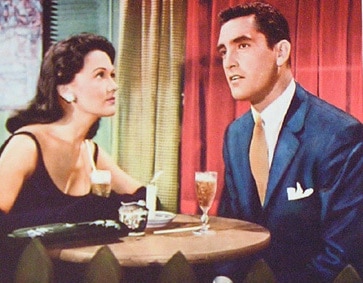In our first post in this two-part series on eye contact, we discussed the importance of eye contact and some of the reasons we don’t always feel comfortable looking someone in the eye.
But just because eye contact is a great thing and a vital tool for improving the quality of all your face-to-face interactions with others, doesn’t mean that more eye contact is always better or that all eye contact is created equal. You have to do it right—at the right time and in the right way. How to do that is what we’ll be exploring today.
We’ll start off with a primer on how to make good eye contact in general conversational situations, and then we’ll tackle eye contact tips for specific scenarios. Let’s get started.
General Principles for Making Effective Eye Contact
Myths, Misunderstandings and Outright lies about owning Gold. Are you at risk?
Eye contact begets eye contact. You might be hesitant to make eye contact with people because you don’t think they want to make eye contact with you. And sure enough, when you look at them the first time, they look away. But they’re probably looking away because they’re thinking the same thing you did; that you don’t really want to make eye contact with them! Even though you made the first move, they’re still worried about rejection. But most people are just waiting for permission to get into a mutual gaze. Studies have shown that once one person in a conversing pair initiates greater eye contact, the other person will follow suit and increase his or her own level of eye contact as well.

But don’t be a creeper. In order for eye contact to be effective, it needs to be welcome and appropriate. When eye contact is unwanted, it goes from gazing to staring, and being stared at makes people uncomfortable. Eye contact results in physiologic arousal—it increases prefrontal brain activity and activates the sympathetic nervous system, speeding up a person’s heart rate, perspiration, and breathing. And this happens not only when you’re directly looking into someone’s eyes, but also when you simply perceive that someone is staring at you. This arousal can be a good thing–if you and a lovely lady are looking into each other’s eyes, it can create a more intense connection. But when someone fixes their gaze on you in a creepy way, it can feel as if a predator is stalking you in the wild; it sets off your threat-o-meter.
 The Power of Eye Conta...
Best Price: $2.04
Buy New $9.36
(as of 05:20 UTC - Details)
The Power of Eye Conta...
Best Price: $2.04
Buy New $9.36
(as of 05:20 UTC - Details)
Thus good eye contact is based on mutuality. As Michael Ellsberg, author of The Power of Eye Contact, puts it:
“In order for eye contact to feel good, one person cannot impose his visual will on another; it is a shared experience. Perhaps eyes meet only for a second at first; one partner then tests the waters and tries a few seconds, and when that is met warmly, the pair can begin ramping up the eye contact together until they are locked in a beautiful dance of eyes and gazes.” [emphasis mine]
After you’ve made two attempts to initiate eye contact with someone, if they don’t reciprocate at all, give it up.
When you’re with someone you’re not as familiar with, lean back as you increase your eye contact. The bit of added space between you balances out the greater eye contact you’re making, allowing the receiver of your gaze to feel more comfortable and keeping the intimacy level from ramping up too quickly. Conversely, when someone is talking to you about something intense and personal, lean in as you hold their gaze to show that you’re giving them your full attention.
Focus on one eye at a time and switch between them. When you’re sitting close to someone, you can’t actually look at both of their eyes at the same time, and if you try to, your gaze will become off-putting and laser-like. You may have never stopped to think about it, but when you look someone in the eye, it is literally just their eye; you look at one of their eyes at a time. You probably already have one eye (the left or the right) that you tend to focus on, but it’s good to switch your gaze from one eye to the other during a conversation (it looks more natural and show more attention and interest). Don’t flit your gaze between their eyes too frequently—you don’t want to appear as if you’re watching a ping-pong match. Smoothly and naturally.
Some people suggest that since you can’t look in both of a person’s eyes at the same time, you should just stare at the bridge of his or her nose. But people can sometimes tell you’re doing that, making the tactic seem artificial and even manipulative.

Don’t overdo it. More eye contact is good…up to a point. You don’t want to lock eyes with someone for an entire conversation. About every 5 seconds, or about the time it takes to speak a single sentence, look away from their eyes for a beat and then back again. Find a natural rhythm–don’t be counting the seconds in your head.
If you feel lost as to how to find that rhythm at first, try the “triangle method.” Look at one of the person’s eyes for a beat, then the other eye for a beat, then at their mouth, and then back at their first eye. Repeat. As you practice this method and get a handle on what good eye contact feels like, you should be able to jettison the set pattern for a flow that comes naturally.

It’s fine to look away from someone when you’re trying to gather your thoughts.
Also note that it’s quite normal and appropriate to break eye contact and look away from someone as you recall a memory, mull something over, or gather your thoughts about what you want to say next.
When you break your gaze, look to the side, not down. Looking down when you break someone’s gaze signals lower-status, shame, and/or submission. Not the kind of message you want to convey. Instead, break your gaze horizontally.
Work your way up. Improving your eye contact is something you can do relatively quickly and easily. It just takes practice. Start out by increasing your eye contact with your family; you may find you don’t even look your own brother in the eye when you talk to him. Then increase your eye contact with your friends, and then your co-workers. As you start to feel more comfortable holding people’s gaze, work on making eye contact with salespeople and waiters. Finally, start making eye contact with strangers and new people you meet. Before long you’ll be a veritable eye contact expert!





